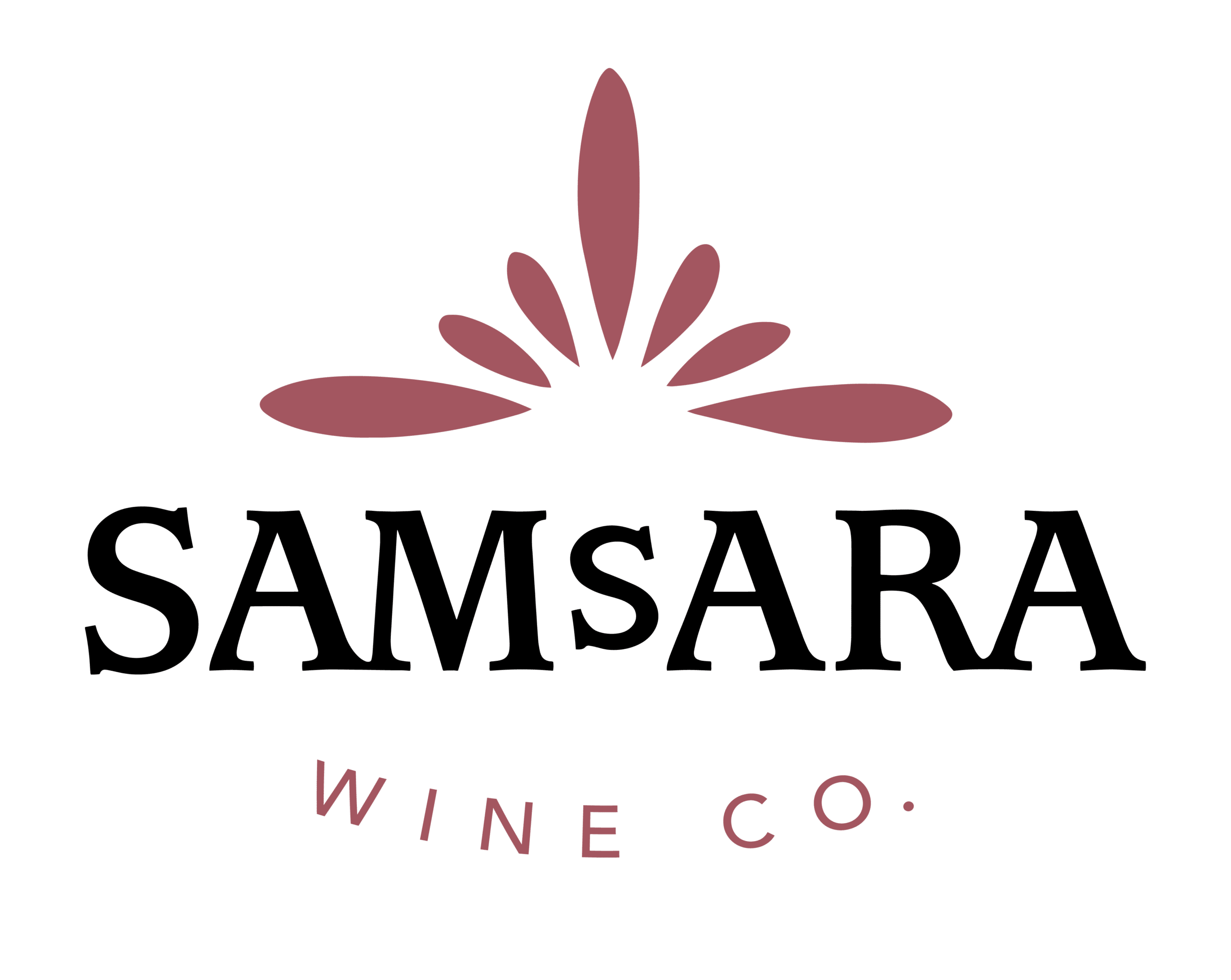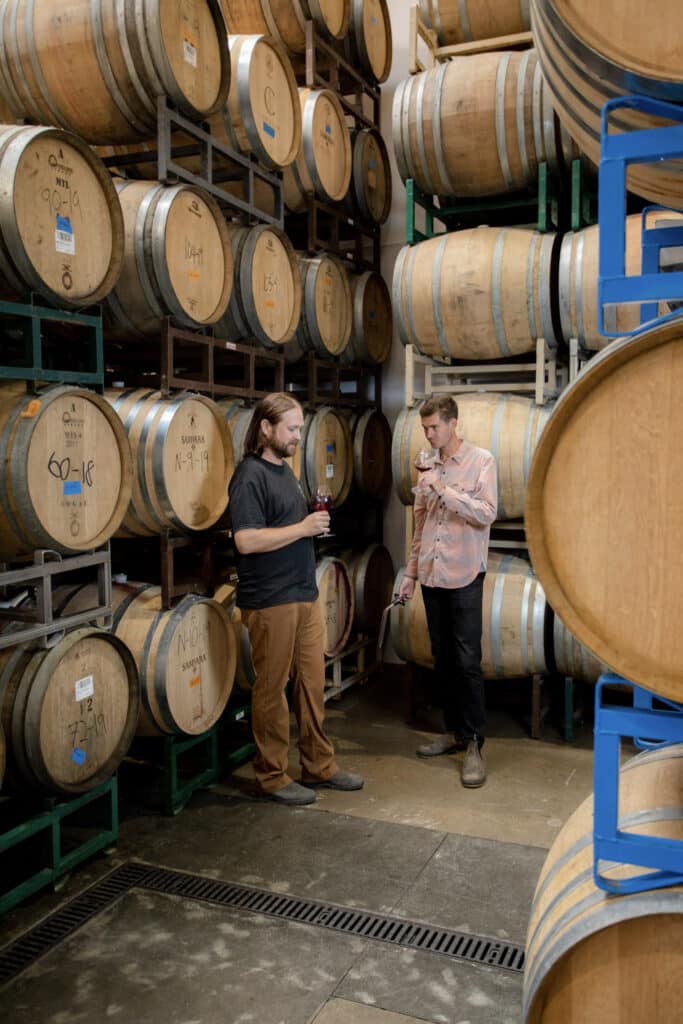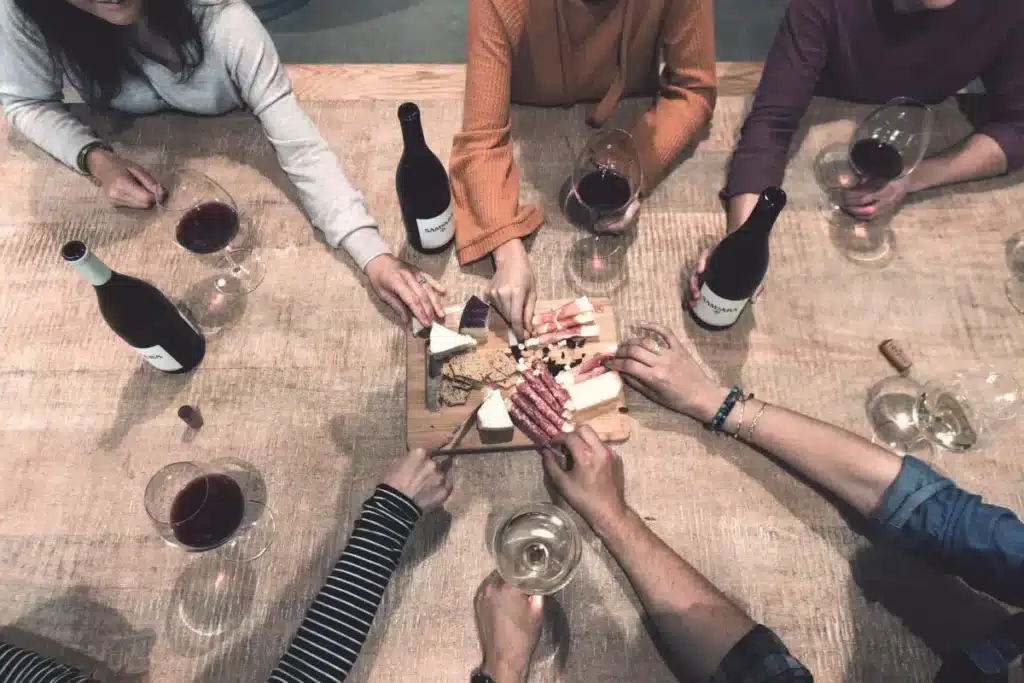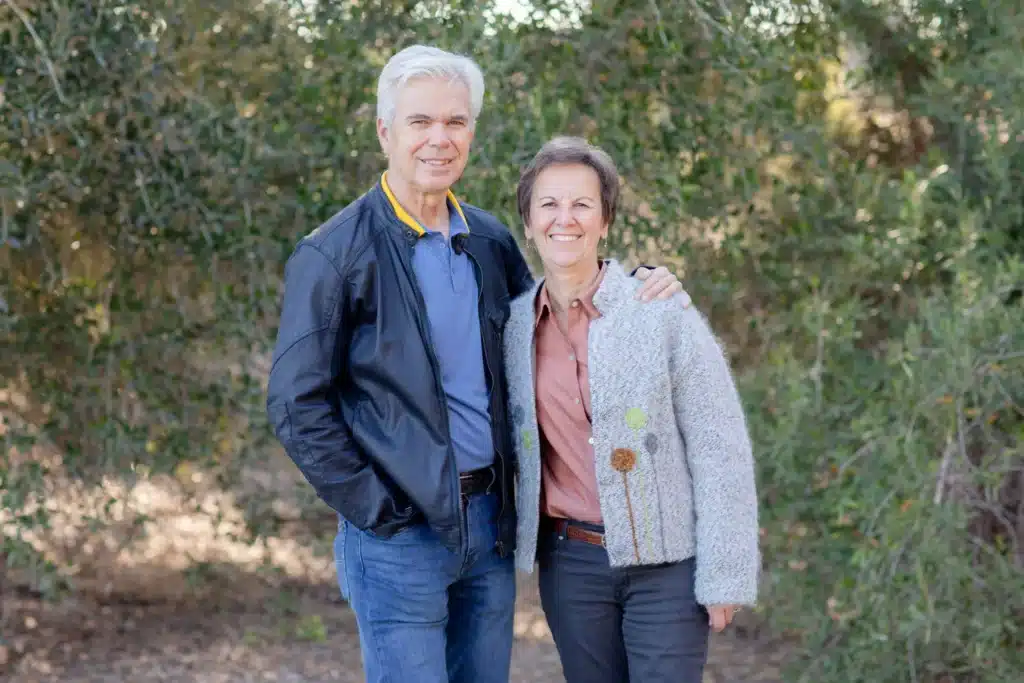No products in the cart.
Spotlight on Pinot Noir from Rancho La Viña Vineyard
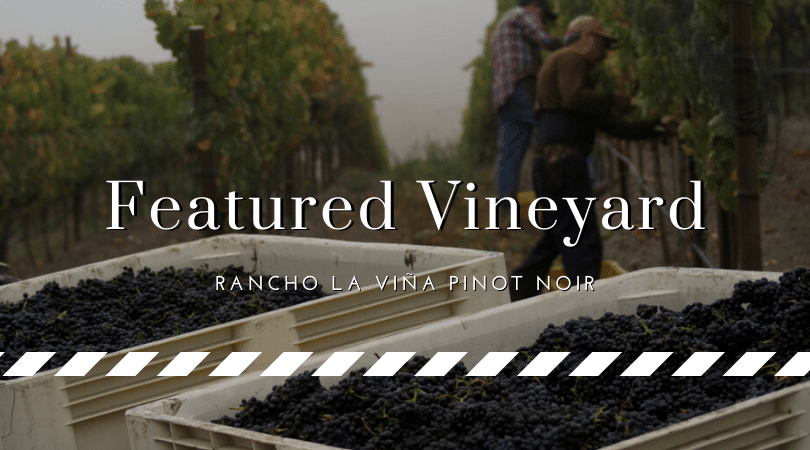
Hi Matt, thanks for taking a walk with me here at beautiful Rancho La Viña vineyard. Tell us a little bit about where we are?
Rancho La Viña Vineyard is on the West end of Santa Rosa Road deep in the Sta. Rita Hills AVA. It’s the second westernmost vineyard on Santa Rosa Road with the only vineyard further west being Salsipuedes Ranch. Just to the east of us are La Encontada, La Riconada, Sanford and Benedict and on down the road.
There are two main corridors that run from east to west, from Buellton to Lompoc; Highway 246 and Santa Rosa Road. Highway 246 is a pretty straight shot through the heart of Sta. Rita Hills, while Santa Rosa Road is a secondary road that runs along the Santa Ynez River through the southern hills and canyon mouths.
What characteristics make Rancho La Viña unique among Sta. Rita Hills vineyards?
Well, the extreme cool climate, for sure. Everywhere in Sta. Rita is cool, but Rancho La Viña in particular because of its really far west location. Additionally, the whole vineyard is planted north-facing. So, it ripens a little slower for that reason too.
Rancho La Viña also provides spectacular views of Sta. Rita Hills as well, because when we walk up to the top of the rows, and look North we can see Sweeney Canyon, Cargasacchi Vineyard, Domain de la Cote and more. It’s a really beautiful and unique perspective of Sta. Rita Hills.
Even more, the whole drive in here is super cool because it’s very remote. You would hardly know that it’s here if you are driving by. You pull off the road in this walnut orchard and take a dirt road. There are several wrong turns you can make as you drive through the hills a little bit. I’ve seen some cool stuff out there like bobcats, deer, coyotes, lots of hawks. It feels like a wild, remote place… like you’ve stepped back in time.
On that subject, tell us what it’s like to stand here in the seven rows that SAMsARA picks from at Rancho La Viña.
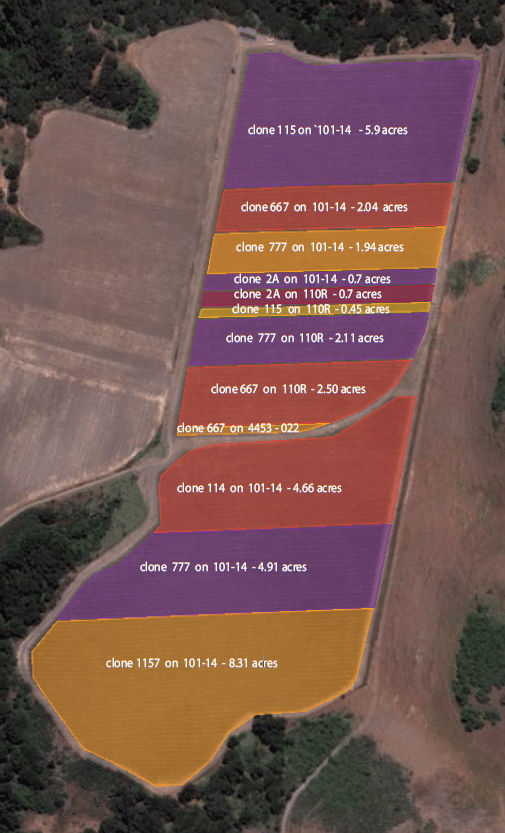
Yeah, our block is really cool. We’ve got seven rows. It’s all Clone 114, which isn’t a very widely planted clone. It’s actually the only 114 that we work with across all of our sites, which makes it a bit special. But the location of that block within the vineyard is really neat because when you walk up to the top of our block and look down, our block lines up with the little dirt road that you take to get into the vineyard.
It’s almost like this Alice in Wonderland thing where you’re driving on this dirt road through the trees and through the bush and then, all of a sudden, you pop out to the other side and there’s this spectacular vineyard. The opposite is true when you walk up to the top of our block and look down. You look at this beautiful vineyard and this really consistent, well-farmed, special site. Then you see that road leading back down into the rest of the world and imagine what is happening on the other side.
Tell us a little bit about how you would describe the fruit that comes from Rancho La Viña.
Well, the fruit quality is superb and really consistent. Because it’s a far-west site, it ripens pretty slow. Typically, out of those cooler sites, you get a little more color, a little more spice, and more acidity. I think the acidity is really what drives the wine because we’re able to get these really fruit-driven, complex, layered wines out of that vineyard with lots of richness still just ribbed in acid. That’s what keeps that wine balanced and together and really takes it to the next level is that freshness, that acidity.
That site just lends itself to producing these wines that have a little bit more red fruit, bright, cranberries and berries and pomegranates and strawberry profile. But then on the palate, there’s this richness and all these sort of base notes and this depth. To me, it’s those contrasting qualities that add to the complexity and make the wine not only delicious but just really interesting and really complex.
On that same subject, what is your favorite thing about Rancho La Viña fruit, in particular, and how does your style of low-intervention winemaking harness that characteristic?
Good question. SAMsARA’s signature for wine making is using a relatively high percentage of whole clusters during fermentation and this fruit is really well suited to not destemming. Using the stems to add complexity through texture and weight and spice and structure and focus and depth. My favorite think about Rancho La Viña fruit is the way that we can truly integrate a high percentage of stems into the wine from Rancho La Viña, really more so than any of our other Pinot Noir vineyards. Part of it has to do with the really low pHs that the fruit comes in at, the high natural acidity, but the stems naturally integrate really well.

The Rancho La Viña fruit just has enough density and flavor concentration where it really absorbs the whole cluster and is almost better suited for whole cluster than any of our other sites. As you know we conduct trials at the winery where we do some fermentations at a third whole cluster, some at two-thirds whole cluster, some at 100 percent whole cluster. The 100 percent whole cluster Rancho La Viña is just spectacular. You can almost not even detect any herbaciousness from the stems. The stems really just enhance the aromatics and provide this extra layer of flavor and complexity that is just so integrated and so well-suited for that fruit.
What are the common aromas and flavor profile of Rancho La Viña wines, if you can encapsulate?
I would say the fruit profile is more bright red fruit. Like I said, cranberries, strawberries, pomegranates, cherries. Then the interesting thing about it is it has the mouth-feel and texture and flavors on the palate that almost – you’re almost surprised by it because you’d think that with that sort of brighter fruit profile, it’s going to be a leaner wine, but it’s got a lot of guts and it’s got a lot of weight, this like laquer-y, mouth-coating weight that just really knocks your socks off.
What do you like to eat best with Rancho La Viña Pinot Noirs?
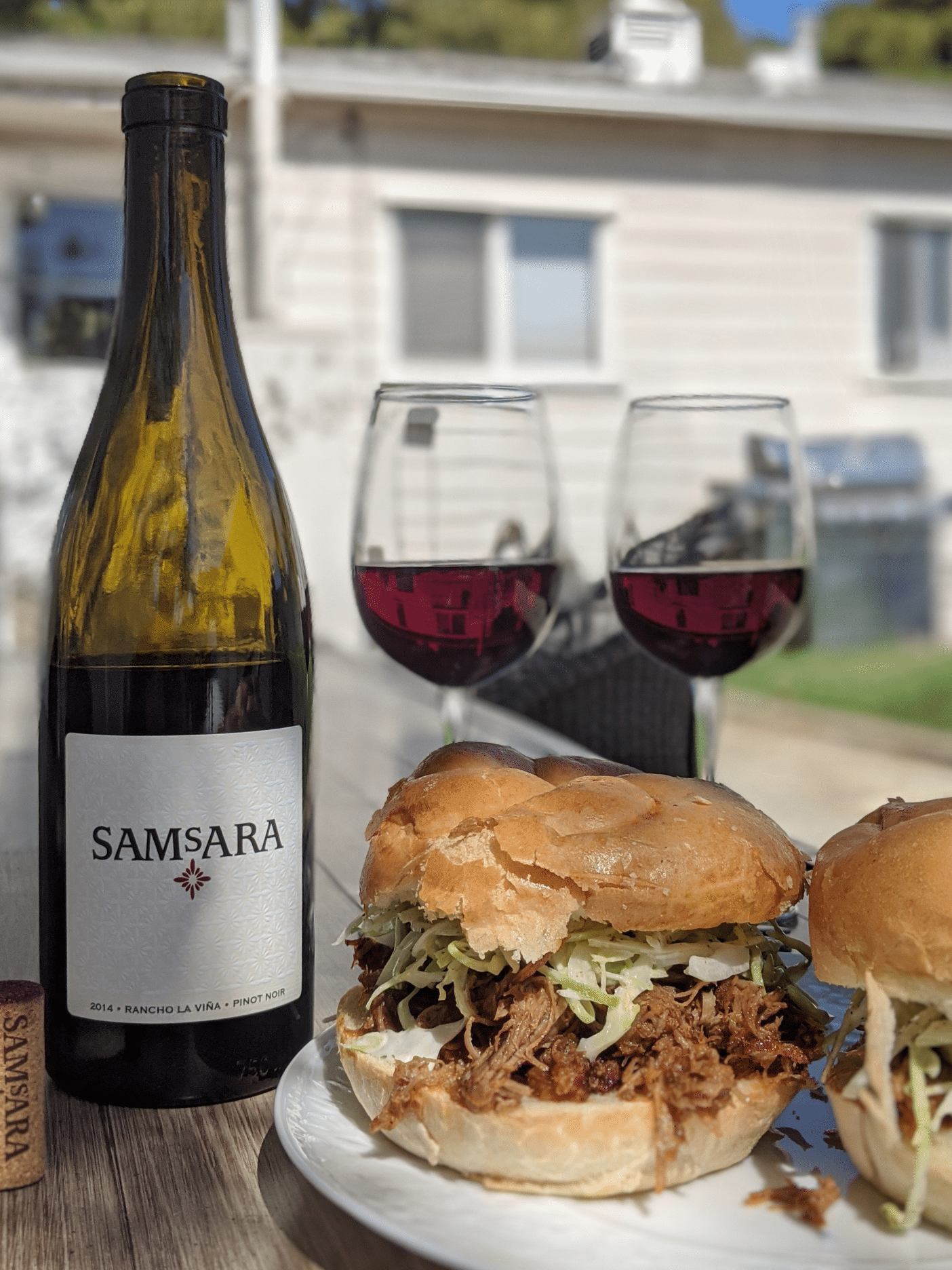
Definitely pork. I mean I think pork is king. Part of that is my love of tacos and being in Santa Barbara, growing up in California and loving pork in all its various forms. But I think because of Rancho La Viña’s unique acidity and just how fresh and bright it is, it really cuts through the fat in pork. I mean pork ribs, pork belly. Duck confit is another go-to just because of all the fat in duck. If I didn’t mention pulled pork, I think that’s a slam dunk.
Very good. How are the 2013, 2014, and 2015 SAMsARA Rancho La Viña’s drinking today?
I think all three vintages are drinking really well. This wine consistently, vintage to vintage, demonstrates its longevity and its ability to age just because of that flavor density, the acidity, the ability to really integrate the stems and the whole-cluster component giving it more structure and more focus. Really, just the density of that wine means that there’s just a lot to start out with. When you start out with a wine that’s just stuffed full of layers, and you’ve got the structure and acidity to balance it, it’s going to last for a while. So, they’re really interesting wines to drink.
I think ’13 and’14 are definitely showing some super interesting qualities as they become slightly older wines. The ’15 is just a powerhouse. It’s drinking great now and is really an optimal candidate to lay down in the cellar for – really for like a decade plus.
